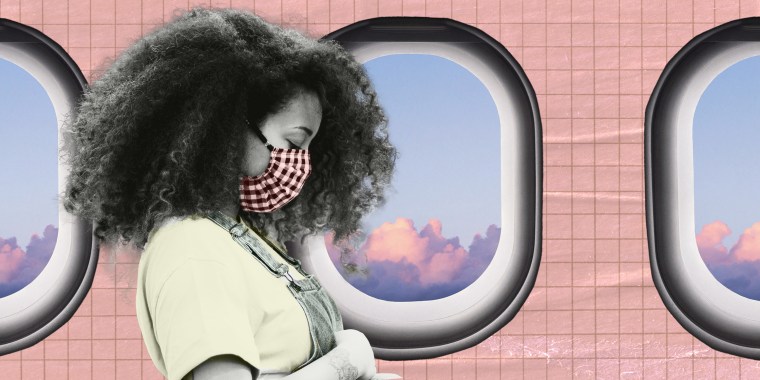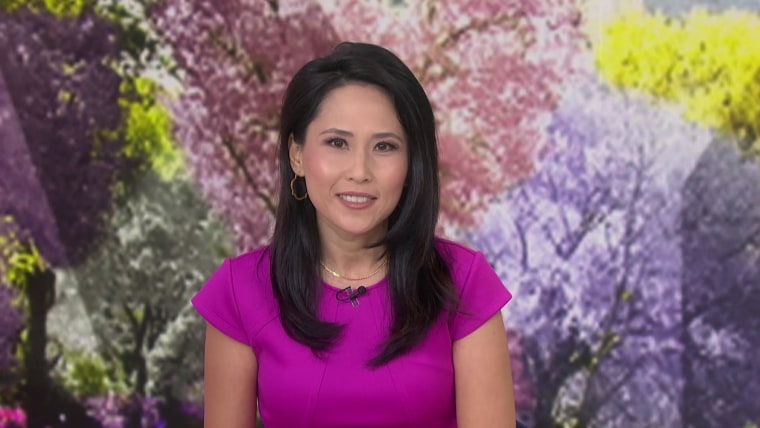Flying in the 21st century was tricky to navigate even before a global pandemic. Now it's even more complicated. Once the vaccine started becoming more available, some have warmed to the idea of traveling again, and I was one of them.
Before booking anything, it's wise to consider that the Centers for Disease Control and Prevention still warns that travel increases a person’s chance of getting the disease, noting that social distancing is difficult on crowded flights. Some experts, however, have become cautiously optimistic about flying as long as safety protocols are followed.
“In general, I think that flying is not as risky as most people perceive it to be,” Dr. Amesh Adalja, a senior scholar at the Johns Hopkins University Center for Health Security in Baltimore and a spokesman for the Infectious Diseases Society of America, told TODAY Health in September.
Simple ways to stay safe from coronavirus next time you fly
SEPT. 7, 202004:33“People often think of planes as major vectors for transmission, but overall, we have not seen much data on transmission on a plane, except for people that are in the immediate vicinity of that person. … We've not heard about major outbreaks on airplanes.”
My first flight since the pandemic began was in February. For family reasons, I flew from Newark, New Jersey, to Los Angeles. I quarantined and got tested before and after my flights to ensure I was traveling as safely as I could.
That being said, here’s what I wish I knew before flying. These days, it's important to be prepared for anything.
Tickets may be cheaper, but some perks come at a price
Despite generally lower ticket prices and more lenient policies about changing flights for free, airlines with different tiers of seating sections (economy, economy plus, business, extra leg room, first class — I mean, who can keep track these days!) may charge for different levels of comfort and space.

American, Frontier, Hawaiian, JetBlue, Spirit, Southwest and United airlines all removed seating restrictions that were once in effect and are booking seats at full capacity. Luckily, the United flight I took to Los Angeles International Airport was virtually empty. The flight attendant told me this wasn't always the case and sometimes the flights fill up completely.
If you're flying United with a family, you have to pay extra to be seated together, so that's important to keep mind when budgeting or ensuring you sit close to children who may need assistance wearing masks.
Alaska stopped blocking middle seats out in regular coach at the start of 2021. If having the middle seat empty makes you feel more comfortable, you'll have to pay for the extra leg room. I opted for this and paid an additional $120 plus the cost of my checked bag.
A tip for those who want to upgrade for more space: Keep checking the flight to see how many seats are booked. If it fills up, you can change to the seats with middles blocked off. And if not, save the money. I had at least a free row on either side of me regardless of paying extra.
Delta is the last of the big domestic airlines to uphold its middle seat blockout policy and will do so through April 30.
Don't forget to pack an extra mask (or two)
In January, President Joe Biden signed an executive order requiring all passengers to wear masks on airplanes. So if you're flying (unless it’s your own private jet), you will have to wear one regardless of whether you're from a state or a municipality that no longer requires masks. The only exemption is that people can temporarily remove their mask while eating. The jargon was adjusted so people couldn’t sit mask-free for the entire flight.
On both United and Alaska, the flight attendants repeated this mandate over the loudspeaker throughout the flight to continue reminding customers. Anyone who is noncompliant could be banned and charged a federal fine of $250 to $1,500 by the Transportation Security Administration.
As someone who is grateful to be able to work remotely, my day spent traveling was the longest I’ve had to mask up since the pandemic started. I brought a handful of masks, including one disposable mask, so I could change it after eating briefly or in case I accidentally dropped it during the airport hullaballoo. I also found that wearing a face covering on a plane ride when you're not busy felt more comfortable when I switched between different fabrics.
Cleaning is key
Both airlines I flew with had cleaning crews come aboard the plane when we landed to sanitize everything. It made me feel more confident. Since the pandemic, all airlines have implemented new cleaning strategies to better disinfect.
For peace of mind (because it's hard to really know how things are being cleaned until you can actually see the space) I came equipped. If I needed to use the tray to balance my computer or a snack, I had sanitizing wipes to give it a quick wipe-down and extra hand sanitizer. I also brought extra paper towel sheets from home in my carry-on so I could lay them on top of my lap or the area if I was going to eat or drink without having to ask for anything extra from the flight attendant.
The food situation is pretty much on you
I’m the kind of person who has a hard time skipping lunch, so I brought mine with me. Neither of my flights served any kind of meal and from all the airlines I've researched, this seems to be a pretty ubiquitous limitation for the time being. First class was the only area of the airline on both flights that received something more than a snack and it was still limited, like a cheese plate.

The food question is relatively vague on most airline websites, aside from the info that there’s no full meal service. For a cross-country domestic flight, United served drinks regularly and dispensed a neat and tidy plastic goody bag of snacks and napkins to every passenger. For those bringing their own food, the TSA also recommends packing your snacks or meal in a little bag like the photo below in case it needs to be handled at security.
Alaska had a surprising method to keep flight attendants from having to move about the cabin. They did one full drink service at the start of the trip and then told passengers on the loudspeaker that there was a sort of "buffet" of drinks set up in one of the back rows. If a passenger got thirsty, that meant they had to walk back to this communal area and grab a drink. I didn't go back to it.
So grab some extra drinks, come equipped with food and your own cleaning supplies and wear safety gear before flying. It's always better to be over prepared than under, in this humble traveler's experience.










